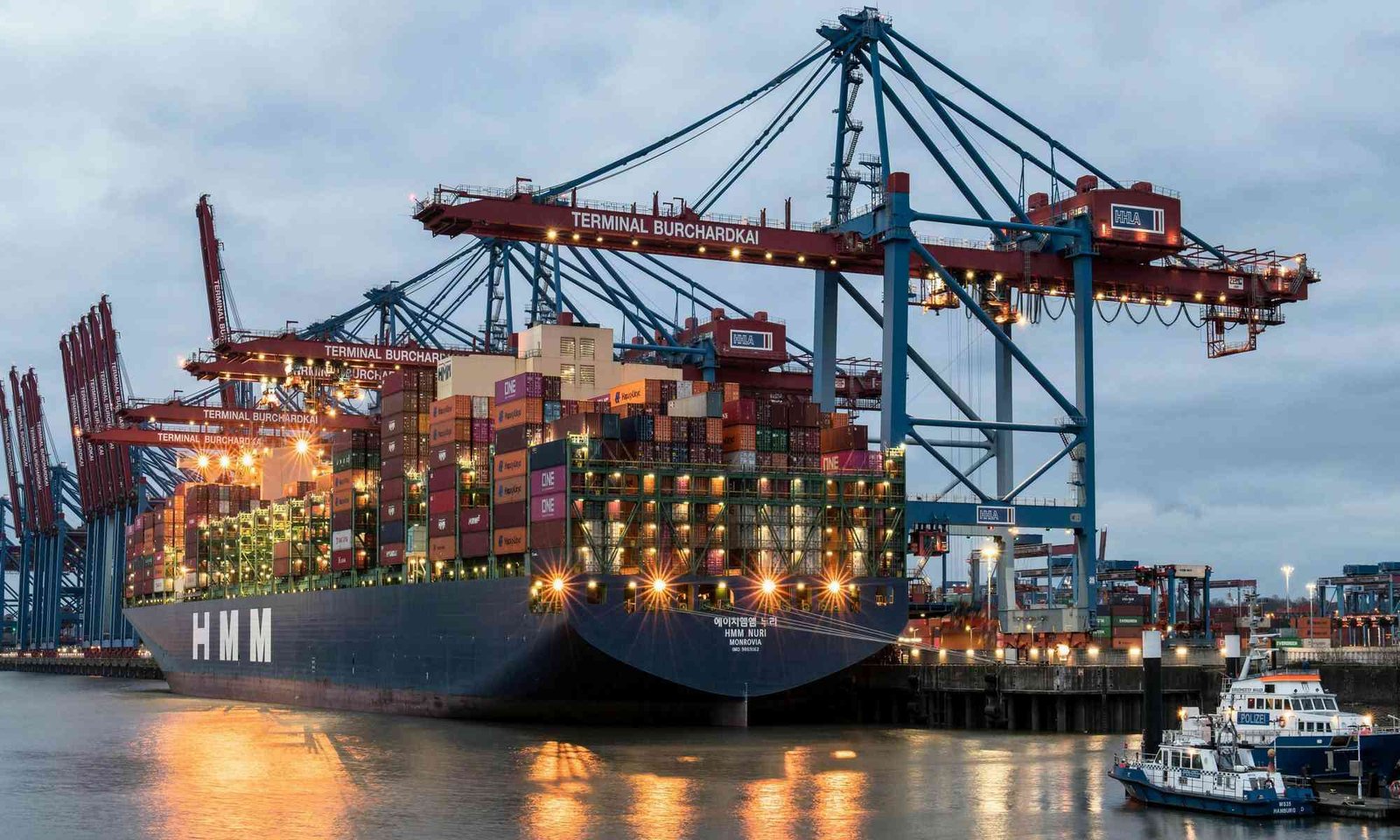Supply chain fragility refers to the vulnerability of supply chains to disruptions that can adversely affect business operations. In the modern business landscape, characterized by globalization and complex interdependencies, fragility manifests when a supply chain is heavily reliant on specific suppliers, geographical regions, or certain modes of transportation. This Dependence can create a precarious situation where any disruption, whether due to geopolitical tensions, natural disasters, or economic fluctuations, can lead to significant operational challenges.
Understanding supply chain fragility is essential for businesses aiming to minimize risks and enhance resilience. For instance, a company that sources materials solely from a single supplier in a politically unstable region may face considerable production delays if that supplier experiences a disruption. This scenario exemplifies how dependence on a limited number of sources can lead to a fragile supply chain, making businesses susceptible to unexpected events that can compromise their ability to meet customer demands.
Recent examples in various industries highlight the real-world implications of supply chain fragility. The COVID-19 pandemic, for instance, revealed how global supply chains are interconnected and how dependencies can lead to cascading failures. Many organizations faced delays in production, shortages of critical components, and inflated costs due to the inability to adapt swiftly to these sudden changes. Such instances underscore the necessity for businesses to evaluate their supply chain strategies critically, identify areas of vulnerability, and diversify their sourcing and logistics options to enhance resilience.
In conclusion, recognizing and defining supply chain fragility is paramount for modern businesses. By understanding the factors that contribute to this fragility, organizations can take proactive measures to strengthen their supply chains, ensuring they remain robust in an unpredictable global environment.
The Role of Dependence in Supply Chain Fragility
In the realm of Supply Chain Management, dependence plays a critical role in establishing the robustness or vulnerability of a supply network. Organizations often rely heavily on a limited number of suppliers, and in particular, the use of sole-source suppliers poses significant challenges. This reliance can create a fragile supply chain environment where interruptions in the supply of goods or materials can have magnified effects, leading to delays in production and potential losses in revenue.
One of the key vulnerabilities associated with dependence on specific suppliers is the risk introduced by geographic concentration. When companies source materials or components from a single region, they expose themselves to various risks, including natural disasters, political instability, or economic downturns in that area. For instance, if an earthquake disrupts the manufacturing capabilities in a particular region, organizations that have a heavy reliance on suppliers in that area may find themselves unable to meet customer demands, resulting in service interruptions and reputational damage.
Moreover, decision-making strategies that prioritize cost savings may inadvertently amplify this dependence. While sourcing materials from a sole supplier can often lead to lower production costs due to negotiated contracts, it may also limit a company’s flexibility in times of crisis. Businesses may struggle to pivot quickly to alternative suppliers or markets, further exacerbating supply chain fragility. The costs associated with this inflexibility can rise dramatically during unforeseen circumstances, as companies grapple with increased logistics expenses and potential loss of customer trust.
Ultimately, organizations must recognize that dependence on a limited supplier network can lead to significant vulnerabilities within their supply chains. A more diversified approach can mitigate these risks, promoting a more resilient supply chain capable of withstanding disruptions and adapting to changing market conditions.
Mitigating Supply Chain Fragility Through Diversification
In the contemporary business landscape, mitigating supply chain fragility is essential for ensuring resilience against disruptions. One effective strategy is diversification, which enables companies to reduce their dependence on a single supplier or region. This approach not only spreads risk but also enhances flexibility in responding to unforeseen circumstances.
In the contemporary business landscape, mitigating supply chain fragility is essential for ensuring resilience against disruptions. One effective strategy is diversification, which enables companies to reduce their dependence on a single supplier or region. This approach not only spreads risk but also enhances flexibility in responding to unforeseen circumstances. Equally important is maintaining Adequate Supplies – buffer stocks, safety inventory, or dual-sourcing critical components – to absorb shocks without halting operations. Diversification without reserves is brittle; reserves without diversification are blind. Resilience demands both
- Multi-sourcing is a key tactic in this strategy, allowing businesses to establish relationships with several suppliers for the same product. By doing so, a company safeguards its operations against potential failures from any one supplier, thereby minimizing the risk of a significant supply chain disruption. Moreover, multi-sourcing fosters competition among suppliers, which can lead to better pricing and improved service levels.
- Additionally, organizations should consider establishing alternative suppliers in different geographical regions. This geographical diversification mitigates the risks associated with regional disruptions, such as natural disasters or political instability. When suppliers are spread across various locations, companies are better positioned to pivot rapidly and maintain operations in the face of localized challenges.
- Investing in local production capabilities can also play a vital role in building a robust supply chain. By developing local manufacturing, businesses can shorten lead times and reduce their reliance on international suppliers. This local presence can create a more agile response to market demands and unexpected supply interruptions.
- Furthermore, implementing a comprehensive risk management framework is paramount for navigating supply chain fragility. Such a framework should encompass proactive assessment of potential risks, monitoring of supply chain performance, and the establishment of contingency plans. By identifying vulnerabilities and addressing them before they escalate, companies can maintain continuous operations even under adverse conditions.
Ultimately, embracing diversification as a fundamental strategy not only reduces supply chain fragility but also empowers businesses to respond effectively to an ever-evolving marketplace.
Lessons Learned and Future Implications
The recent global supply chain disruptions, particularly those exacerbated by the COVID-19 pandemic, have underscored several critical lessons about the inherent fragility of supply chains. One key takeaway is the necessity for businesses to re-evaluate their dependence on single suppliers or geographic regions. The pandemic illuminated how reliant companies had become on specific sources, making them vulnerable to unexpected shocks. This realization has prompted organizations to diversify their supplier base to mitigate risks associated with over-dependence.
The pandemic also accelerated digitization across supply chain management. Companies are adopting integrated digital solutions to streamline operations and improve responsiveness. Automation, artificial intelligence, and the Internet of Things (IoT) are reshaping logistics, enabling faster adaptation to market shifts and greater operational efficiency. Organizations that fail to evolve risk falling behind in a more volatile and competitive environment.
This fragility was further exposed in March 2021, when the container ship “Ever Given” blocked the Suez Canal for six days. A single vessel, lodged sideways in one of the world’s busiest trade arteries, disrupted nearly 12% of global commerce. Hundreds of ships were delayed, and ripple effects hit industries from electronics to food and pharmaceuticals. The incident highlighted how concentrated logistics routes – optimized for speed and cost – can become single points of failure. It was a stark reminder that geographic dependence isn’t just about suppliers; it’s also about infrastructure.
True resilience goes beyond recovery – it demands antifragility. Systems must not only withstand shocks but improve because of them. The Ever Given incident exposed brittle over-optimization; antifragile supply chains would respond by re-routing, reconfiguring, and learning. Redundancy, optionality, and modularity are not inefficiencies – they’re strategic assets. In a world of compounding disruptions, fragility is a liability. Antifragility is the new baseline.
A significant lesson from recent disruptions is also the need to enhance supply chain visibility. Many businesses struggled to respond to fluctuations due to limited insight into their networks. Technologies such as data analytics and blockchain now play a critical role in providing real-time visibility into inventory levels, demand forecasts, and performance metrics. These tools are increasingly seen as essential for building resilient systems capable of absorbing future shocks.
Ultimately, acknowledging fragility is only the starting point. Resilience demands proactive strategies built on diversification, visibility, and technology – alongside a clear understanding of the systemic risks embedded in over-optimized infrastructure. The goal is not just to recover from disruption, but to anticipate it, absorb it, and emerge stronger, more adaptive, and better prepared for future volatility and sustained performance.
What’s More
The posts in My Blog explore reflective and narrative-driven themes, often tied to personal experiences or societal observations, emphasizing storytelling and commentary.
Dependence (11) Fiction (10) Karma (10) Landmarks (12) Paramount (10) Spectrum (10) Spotlight (10) Take Off (10) Terra Shapes (10) Trepidation (10) Unique (10) Virtue (10)
Selecting an option will take you to that post.
(123)
The topics in My Interests examine broad, conceptual, and philosophical ideas, emphasizing exploration of abstract notions and their deeper cultural and societal implications.
Amazing Stuff (10) Beyond Known (10) Controversial (10) Digital World (10) Inequities (10) Innovative (10) Metaphysics (10) Orbiting Entities (10) Our Society (10) Outer Space (10) Value Creation (13) Yearnings (10)
Selecting an option will take you to that post.
(123)
Curious to dive deeper and ready to share your thoughts on all of this? Join the conversation and be part of the Site Forum. Your online discussion board providing space for engaging exchanges on specific topics and shared interests across this website.

















